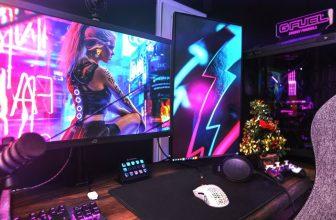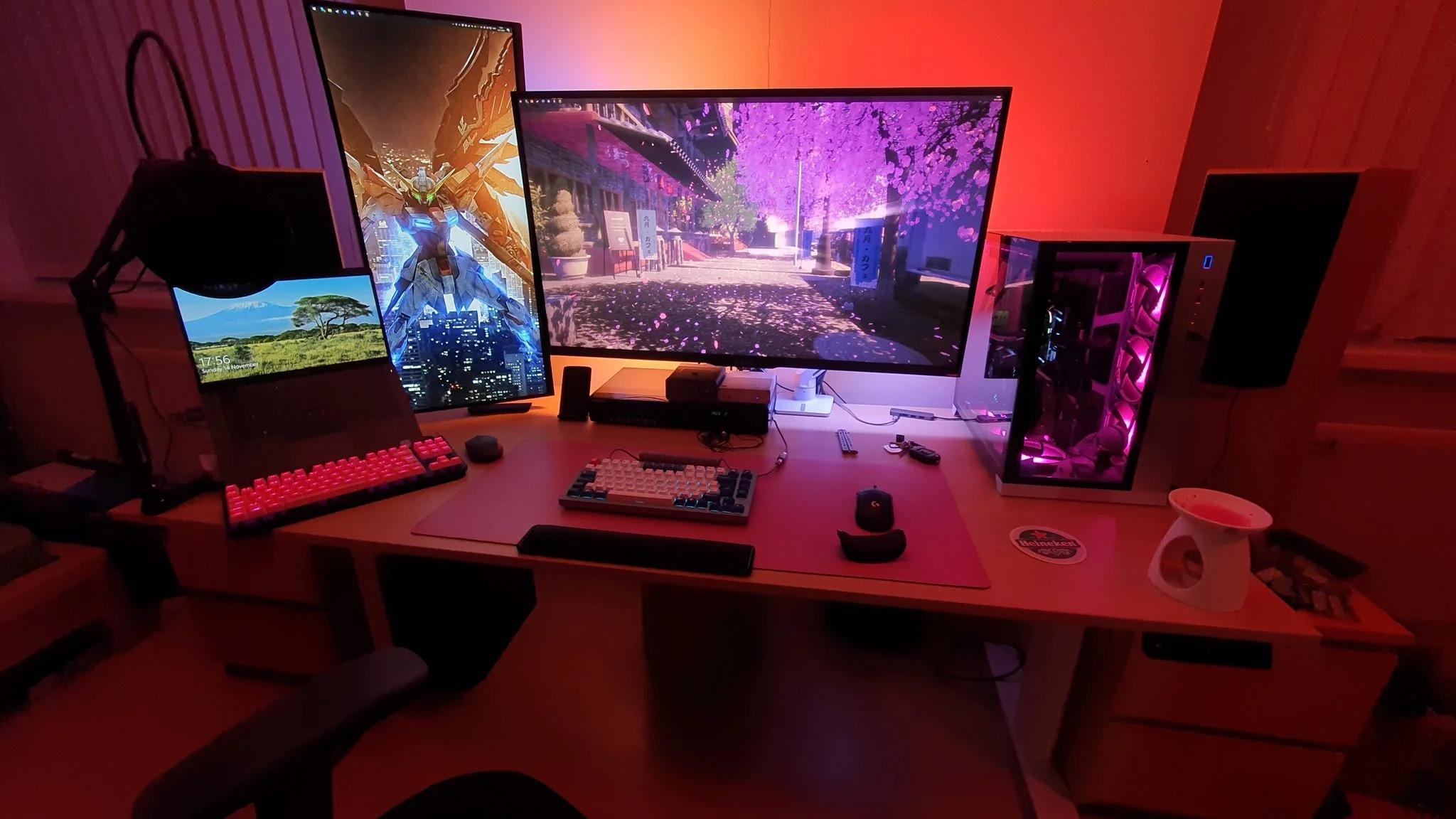
An ultrawide monitor with more pixels requires more power from a GPU or graphics card. If you need a better graphics card to make the most of your screen space or specifically what graphics card for ultrawide monitor, this article of FittingChairs is for you!
How To Use An Ultrawide Monitor with Graphics Card?
If you intend to use an ultrawide monitor setup for your PC or laptop to replace your standard monitor, you will require a better graphics card to maximize your screen space whether it is a gaming monitor or an ultrawide screen for working, or other purposes.
A graphics card with sufficient processing power is required to support a 1440p ultrawide monitor (3440×1440 fps) or higher.
Keep in mind to make sure you get a GPU with enough free RAM to support the resolution of your ultrawide monitor, which is listed on the monitor’s specifications.
Unless your hardware is ancient, most GPUs can support curved screen ultrawide monitors.
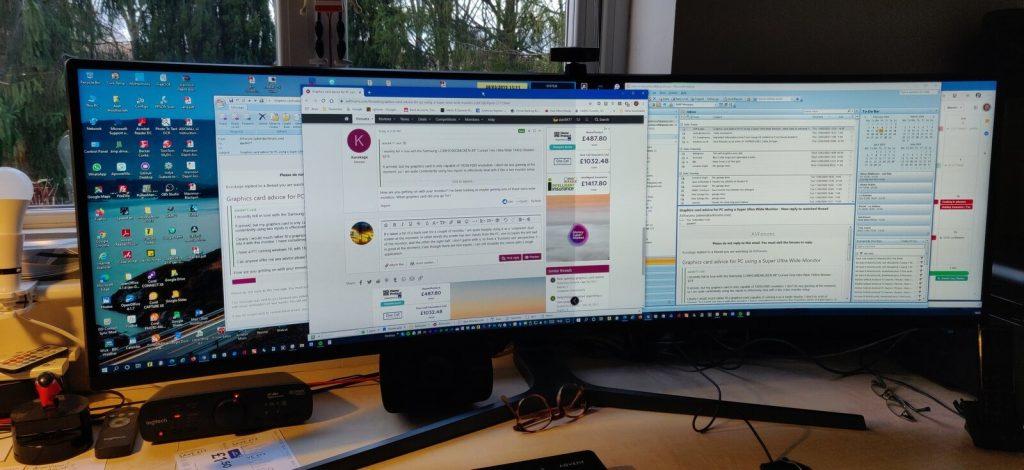
While dragging open windows, you will notice a difference in frame rate and refresh rate if the ultrawide resolutions are too high for your GPU. It’s a sign of problems if you do not have the appropriate graphics card regardless of screen size.
What Graphics Card For Ultrawide Monitor?
When it comes to computers, far too many choose the cheapest option available. However, not everyone requires cutting-edge technology.
In fact, many people would prefer to spend less money and get something that works adequately.
Once you must spend money in order to obtain the most up-to-date technology, for playing online games or making videos, photos, you might as well get the fastest graphics card available.
If you’re wondering if you need a high-end graphics card, knowing the best GPU for 1080p ultra wide or why you might not need a high-end GPU, read on to know how you can save hundreds of dollars on a graphics card.
What Is An Ultrawide Monitor?

Anyway, ultrawide monitors are wider than standard monitors. To put it another way, ultra-wide monitors have a 21:9 aspect ratio, whereas traditional monitors have a 16:9 aspect ratio.
A 21:9 aspect ratio is similar to the display of traditional movie theater screens. This is explaining why ultra-wide monitors can provide the ultimate cinema experience as well as ultrawide gaming thanks to the extra horizontal space.
Why Do You Need An Ultrawide Monitor?
Ultra-wide monitors have numerous applications, particularly if you do a lot of work on your computer. When you have multiple tabs open for editing, recording, and other applications, the extra horizontal space allows you to multitask and be more productive than with a standard monitor.
But, it’s worth noting that ultrawide monitors not only have more screen real estate, but they also have more vivid details depending on their resolution.
Many gamers also use an ultrawide gaming monitor for their setup because it allows them to use their peripheral vision, giving them an advantage over their opponents.
Here are some of the advantages of buying ultrawide monitors for your computer setup:
Great For Ultrawide Games
Whether you’re playing games on your PC or a game console, having a larger monitor with more space can improve your gaming experience significantly.
Indeed, you can see most of the screen with your peripheral vision, especially if you chose a curved larger screen with a higher screen resolution.
Whether you’re playing racing games or first-person shooters, a larger single display is preferable to dual monitors for a better immersive experience.
The Best Visual Experience
A high-resolution and larger-display monitor is preferable for reading, writing, working, viewing photos, and so on. Depending on your needs, some ultra-wide monitors can be set up horizontally or vertically.
The Best Cinematic Experience
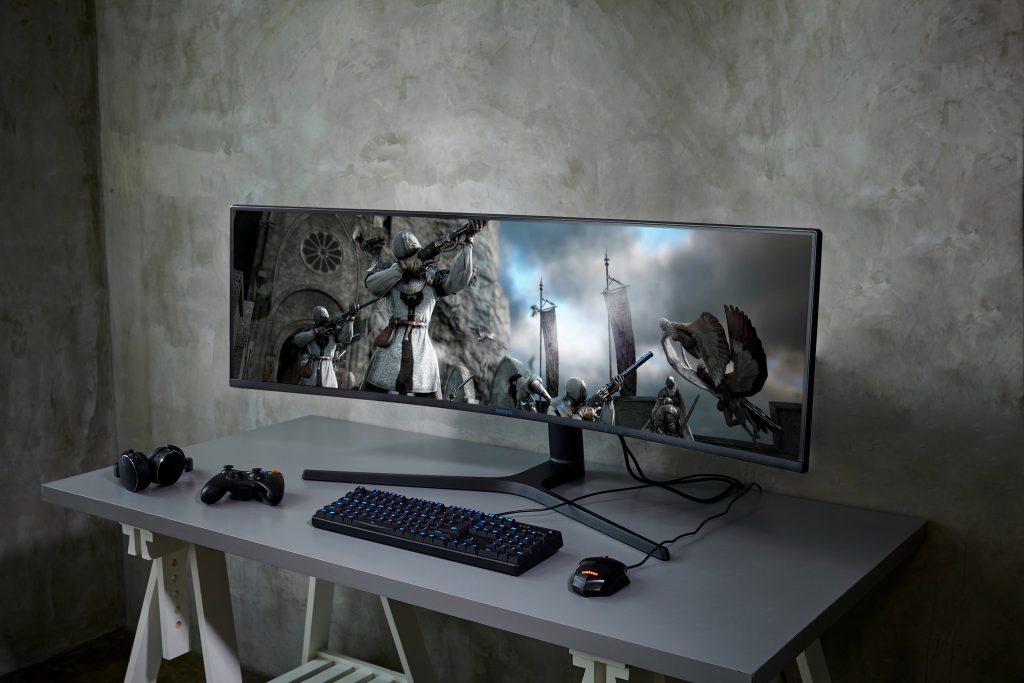
There are only a few people nowadays watch movies and TV shows on their televisions. If you want to have the same movie experience on your computer, make sure you get wide curved displays with home-theater quality.
Keep in mind that without a GPU to support the 4k monitor resolution, it will all be for naught and you won’t be able to take advantage of the full potential of such a large screen.
Do You Need A Graphics Card To Use An Ultrawide Monitor?
To run effectively, every computer requires a graphics card. However, for monitors with higher resolutions and more pixels, you will need a better graphics card that can support it.
Some GPUs have more random access memory, which allows them to produce more frames per second.
Besides, you can also consider a higher boost clock, which works similarly to a fan. The boost clock automatically increases the speed of a graphics card to provide high performance under heavy load, making GPUs with a higher boost clock rate suitable for gaming and other applications.
See the table below to help you find the best GPU for the widescreen monitor you want to buy:
| Screen Resolution | Number of Pixels | Refresh Rate | GPU RAM |
| 1920 x 1080 | 2,073,600 | 600MHz | 4 GB or higher |
| 3440 x 1440 | 4,953.600 | 1000MHz or higher | 6 GB or higher |
| 3840 x 2150 | 8,294,400 | 1800MHz | 8 GB or higher |
Besides the amount of RAM or random access memory, the type of RAM can also affect GPU performance.
The following are the various types of GPU RAM that you will encounter and require for ultrawide monitors:
SDRAM DDR3
This type of video RAM is also known as synchronous dynamic random access memory with a double data rate of 3. It is a type of graphics card memory found in many older computers.
Although this RAM could work with ultra-wide monitors with more memory, it will not provide you with the best experience.
GDDR5
GDDR5, or graphics double data rate type five synchronous dynamic random access memory, is a more advanced type of RAM that can support higher screen resolutions.
Despite its power and excellent performance, it is also smaller and produces less heat. If you’re looking for a GPU that can support wider screens in high definition, make sure you start by looking at the RAM.
GDDR5X
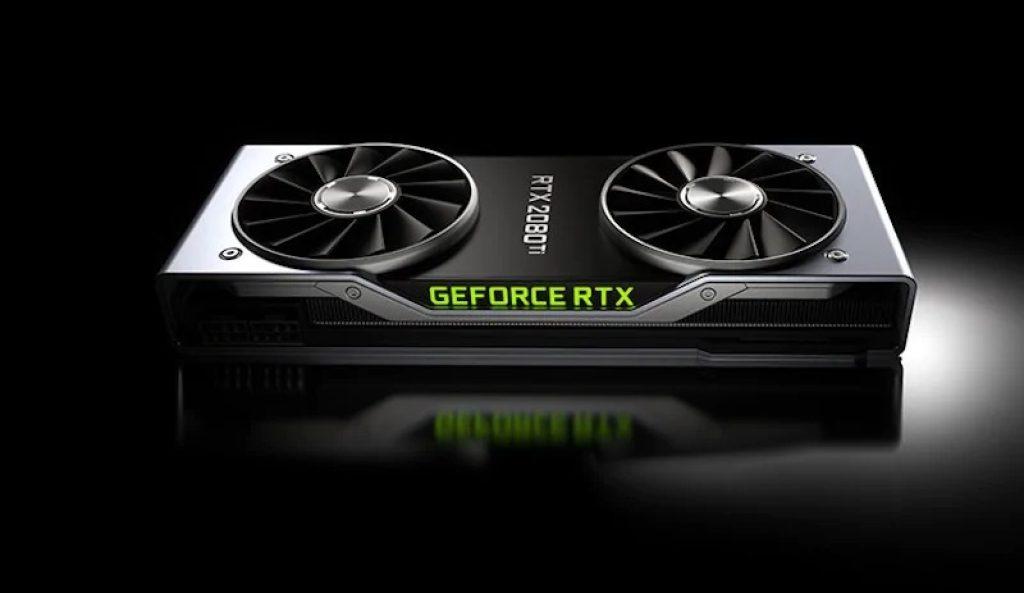
This video RAM is the most recent version of the GDDR5 SDRAM.
It was standardized in 2015 and doubles the current rate of GDDR5 RAMs, making it a more versatile option if you want a 4k resolution monitor.
GDDR6
This SGRAM type was created specifically for high-end computers using ultrawide monitors with higher screen resolutions.
Using this type of RAM mixing with a GPU is one of the best options for gaming and other high-resolution uses of your monitor.
HBM2 and HBM
Although high bandwidth random access memory or HBM video RAMs appear to be overkill even for gaming, many users are willing to pay the extra money to get the best experience possible with a GPU of this caliber.
It is designed for advanced computer systems, and any computer equipped with an HBM GPU qualifies as a supercomputer.
This massive memory bandwidth has the potential to outperform GDDR5 and GDDR6 RAM in terms of power and performance.
However, because of its high bandwidth, this type of RAM is slower than GDDR5s, which is inconvenient for some users.
Do Ultrawide Monitors Affect CPU Performance?
Although an ultrawide monitor can have an impact on CPU performance, one of the most common ways to mitigate the impact on FPS is to upgrade your GPU.
Generally, refresh rates indicate how many frames per second a monitor can display.
If you have an older PC with at least 4GB of RAM, you can upgrade to a GDDR5 8GB GPU to enjoy an ultrawide monitor for watching movies on your computer.
Even with a GPU upgrade, a dual-core 4GB RAM processor will not be ideal for gaming. The processor and graphics card work in tandem, so make sure to upgrade both to get the best gaming experience.
Things To Consider When Buying Gpu To Run Your Ultrawide Monitor
If you’ve decided that you need to upgrade your computer’s GPU, here are some things to think about before buying one off the shelf:
Consider Your CPU
Before purchasing the best GPU on the market, you should consider whether your CPU is capable of handling it. The best GPUs on the market are far too advanced for CPUs with an i5 or lower processor.
So, if you’re thinking about upgrading to a GPU that can handle an ultrawide monitor, you should also think about upgrading to a better processor to get the best experience for working, watching, and gaming.
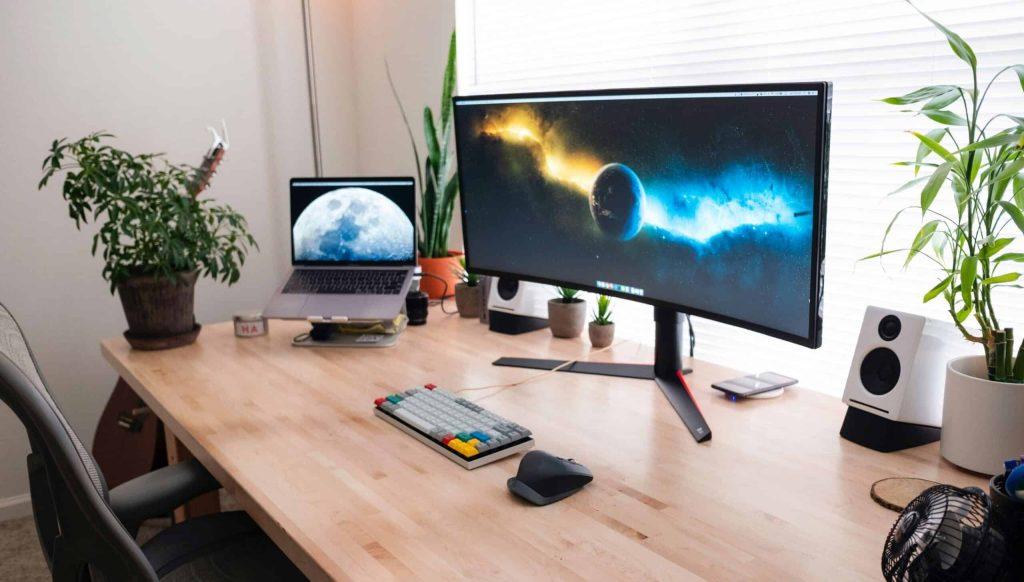
Higher Refresh Rate
The refresh rate, measured in megahertz (MHz), is the number of times per second the monitor displays a new image. If you want to find out the best GPU for 1080p ultra wide, don’t ignore this significant factor.
Many people confuse refresh rate with frame rate, but it is actually independent of frame rate.
When selecting the best GPU for your wide monitor, look for one with a higher refresh rate to reduce flickering, which can cause eye strain.
If you’ve ever tried taking a photo of your computer screen with your phone camera and the monitor flickers excessively, this indicates that the GPU and monitor have a low refresh rate.
Consider The Purpose
If you want to buy the best graphics card that is compatible with your ultrawide screen monitor for gaming, simply match the specifications of the widescreen monitor you want to buy. 1080p resolution only requires a 60Hz GPU to function, so you don’t need anything more.
Consider Space And Power
Before purchasing a GPU, ensure that you have enough space in your PC case and that your power supply has enough watts to spare for the graphics card you intend to purchase.
Anyway, if you’re thinking about getting a dual graphics card, it’s not really worth the extra money. If you want to save money, just buy the best GPU you can afford.
Consider Your Budget
As previously mentioned, your graphics card should be compatible with your CPU, which means you should consider your budget since you may be upgrading your CPU as well.
If you blow your budget on the best GPU, you may not have enough money to upgrade your CPU, especially if you are on a tight budget.
2 Best GPUs For Gaming And Everything Else
Now that you know what kind of GPU you should get for your ultra-wide monitor, here are some of our top picks.
Nvidia Geforce RTX 3080
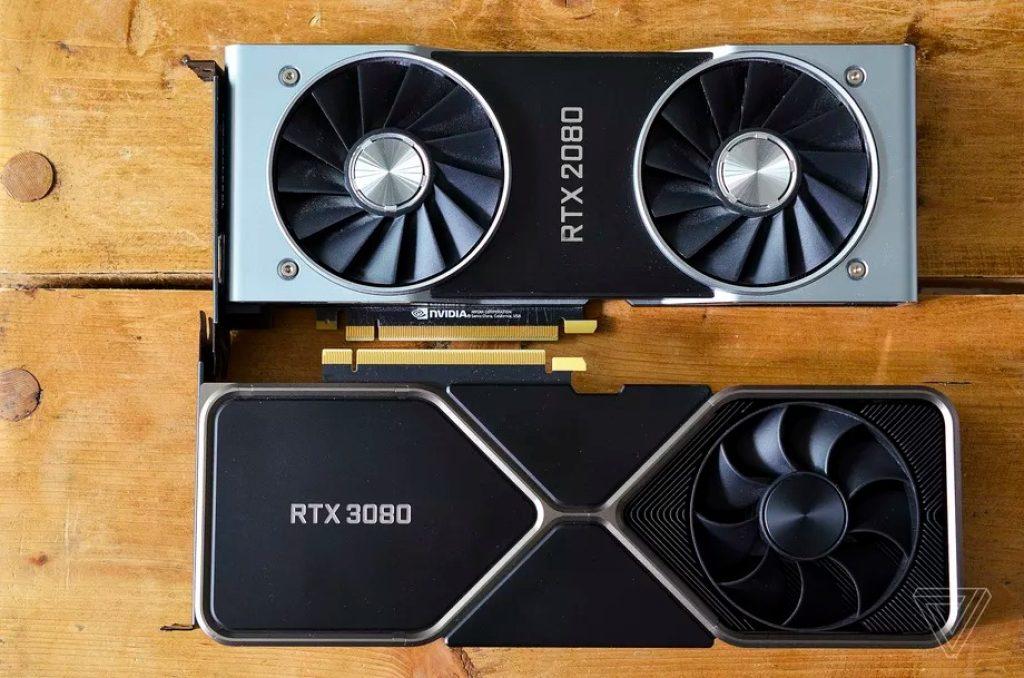
Specs:
- Supports up to 4K resolution
- High refresh rate
- 1.71 GHz Boost Clock Speed
- 10 GB memory
This GPU is one of the best options if you want something that can handle ultra-HD games at a higher frame rate.
It supports up to 107 frames per second and has over 150 top gaming applications. If that isn’t enough, it has a high refresh rate and a fast boost clock speed, making it suitable for almost any application.
This graphic card, on the other hand, is quite high-end. If you want to maximize the use of a widescreen monitor, this is one of your best options.
It should be noted that this GPU was designed for gaming, so if you only use your PC for watching movies or doing work that does not require high-quality graphics, you should not spend too much money on something like this.
XFX RX 5700 XT Thicc III Ultra
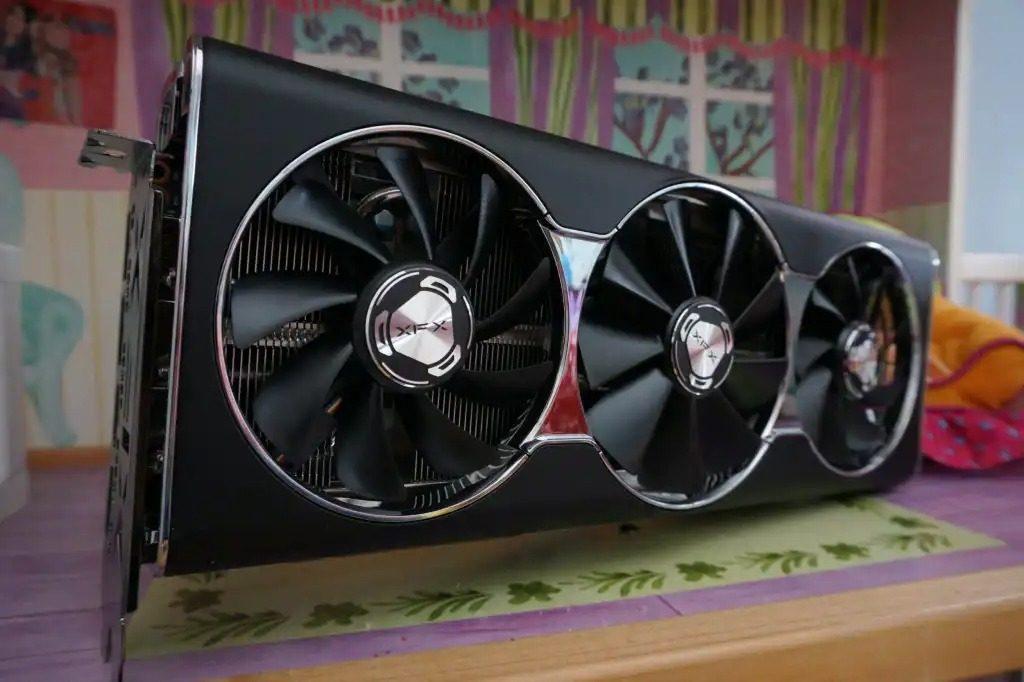
Specs:
- Supports up to 4k resolution and 1044 ultra-wide gaming
- 1925 MHz boost clock and 1815 MHz game clock
- 8GB RAM
This GPU is an excellent choice if you are looking for the best budget option that supports 1044 gaming and 1080p resolution.
Despite having only 8GB of RAM as opposed to the RTX 3080’s 10GB, it is equipped with GDDR6 RAM that can handle higher screen resolutions and a 21:9 aspect ratio from wide monitors.
Besides, although it also does not support 4K resolution, its high boost clock speed and high refresh rate make it reasonable.
It works well for photo editing and watching HD videos but considering if you want the best GPU for gaming.
Have you had your answer for what graphics card for ultrawide monitor yet? Refer this article of FittingChairs and improve your gaming performance with curved screens and more power from a GPU.




